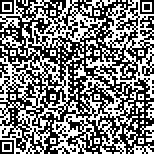附件
|
| 引用本文: | 马建行,宋开山,邵田田,赵莹,温志丹.基于HJ-CCD和MODIS的吉林省中西部湖泊透明度反演对比.湖泊科学,2016,28(3):661-668. DOI:10.18307/2016.0323 |
| MA Jianhang,SONG Kaishan,SHAO Tiantian,ZHAO Ying,WEN Zhidan.Comparison of water transparency retrieving of lakes in the mid-east part of Jilin Province based on HJ-CCD and MODIS imagery. J. Lake Sci.2016,28(3):661-668. DOI:10.18307/2016.0323 |
|
| |
|
|
| 本文已被:浏览 8998次 下载 5007次 |

码上扫一扫! |
|
|
| 基于HJ-CCD和MODIS的吉林省中西部湖泊透明度反演对比 |
|
马建行1,2, 宋开山1, 邵田田1,2, 赵莹1, 温志丹1
|
|
1.中国科学院东北地理与农业生态研究所, 中国科学院湿地生态与环境重点实验室, 长春 130102;2.中国科学院大学, 北京 100049
|
|
| 摘要: |
| 水体透明度能够反映光在水体中的穿透程度,影响水生植被及以光为依赖条件的水生生物的分布,获取透明度的传统方法是采用透明度盘进行测量,但也可以通过遥感方法获得.环境减灾卫星是专门用于环境与灾害监测预报的小卫星星座,影像覆盖范围广,空间、时相分辨率较高,可以为水环境遥感提供较好的数据源.MODIS数据在近岸水体和内陆大型湖泊水环境监测中也有广泛应用,它的时相分辨率也很高,但空间分辨率低.利用HJ-1A卫星CCD数据和MODIS日反射率产品(MOD09GA),以2012年9月吉林省石头口门水库、二龙湖、查干湖、月亮泡等地的实测透明度为基础(实测点数74个,最小值为0.134 m,最大值为1.410 m,平均值为0.488 m),根据灰色关联度选取构建模型的波段组合,建立水体透明度反演模型.HJ1A-CCD数据与MOD09GA数据建立的模型R2分别为0.639和0.894,均方根误差(RMSE)分别为0.248和0.135,模型验证的平均相对误差(MRE)分别为17.1%和9.5%,RMSE分别为0.207和0.089.MODIS数据以其较高的辐射分辨率使模型精度较高,但是HJ数据在应用于透明度小于1 m的水体时精度也较高(MRE=13.5%,RMSE=0.066).HJ-CCD数据在空间分辨率上的优势使其能够获得透明度空间分布的细节信息.比较两者反演得到的湖泊平均透明度,结果较为一致. |
| 关键词: 水体透明度 遥感 HJ-CCD MODIS 湖泊 |
| DOI:10.18307/2016.0323 |
| 分类号: |
| 基金项目:国家自然科学基金面上项目(41171293)资助. |
|
| Comparison of water transparency retrieving of lakes in the mid-east part of Jilin Province based on HJ-CCD and MODIS imagery |
|
MA Jianhang1,2, SONG Kaishan1, SHAO Tiantian1,2, ZHAO Ying1, WEN Zhidan1
|
|
1.Key Laboratory of Wetland Ecology and Environment, Northeast Institute of Geography and Agroecology, Chinese Academy of Sciences, Changchun 130102, P. R. China;2.University of Chinese Academy of Sciences, Beijing 100049, P. R. China
|
| Abstract: |
| Water transparency is widely used as an indicator for lake eutrophication assessment. It reflects the transmition of light in water, and has significant effects not only on light transmitting for the submerged vegetation but also on hydrobioses that live on the existence of light. Water transparency is measured by a Secchi disk(SD) traditionally. It could also be derived remotely by satellite imaging. The Environment and Disaster Monitoring Satellite Constellation(Huan Jing-1A or HJ-1A) series are used for environment monitoring and disaster prediction. With a wide swath, relative high spatial resolution and short revisit period, the image can provide valuable data for aquatic environment monitoring. Moderate Resolution Imaging Spectroradiometer(MODIS) is another dataset widely used which is suitable for environment monitoring in coastal and large inland water. It has high temporal resolution but low spatial resolution. Combining with in situ measured SDs over the Reservoirs Shitoukoumen and Xinlicheng, Lakes Erlong, Chagan, Yueliang, Dakuli and Talahong sampled in September 2012, we developed and validated two models for estimating SD based on the data of HJ-1A and MODIS daily surface reflectance(MOD09GA, spatial resolution is 500 m), respectively. The appropriate band combinations for the model development were determined by gray relative analysis. The results indicate that the models performed well with both HJ-CCD and MODIS reflectance product(R2=0.639, RMSE=0.248 and MRE=17.1% for HJ-CCD; and R2=0.894, RMSE=0.135 and MRE=9.5% for MOD09GA). Due to its high radiometric resolution, MODIS data performed better than HJ-CCD data. However, when applied the models to lakes that the water transparency is lower than 1 m, the accuracy of HJ-CCD data is acceptable(MRE=13.5%, RMSE=0.066). The advantage in the spatial resolution of HJ-CCD data makes it possible to obtain detailed information on the spatial distribution of the transparency. Compared with the average lake transparencies derived from the two types of data, the results were consistent. This result provided a guideline for the SD monitoring in the lakes at a region-space scale. |
| Key words: Water transparency remote sensing HJ-CCD MODIS lake |
|
|
|
|